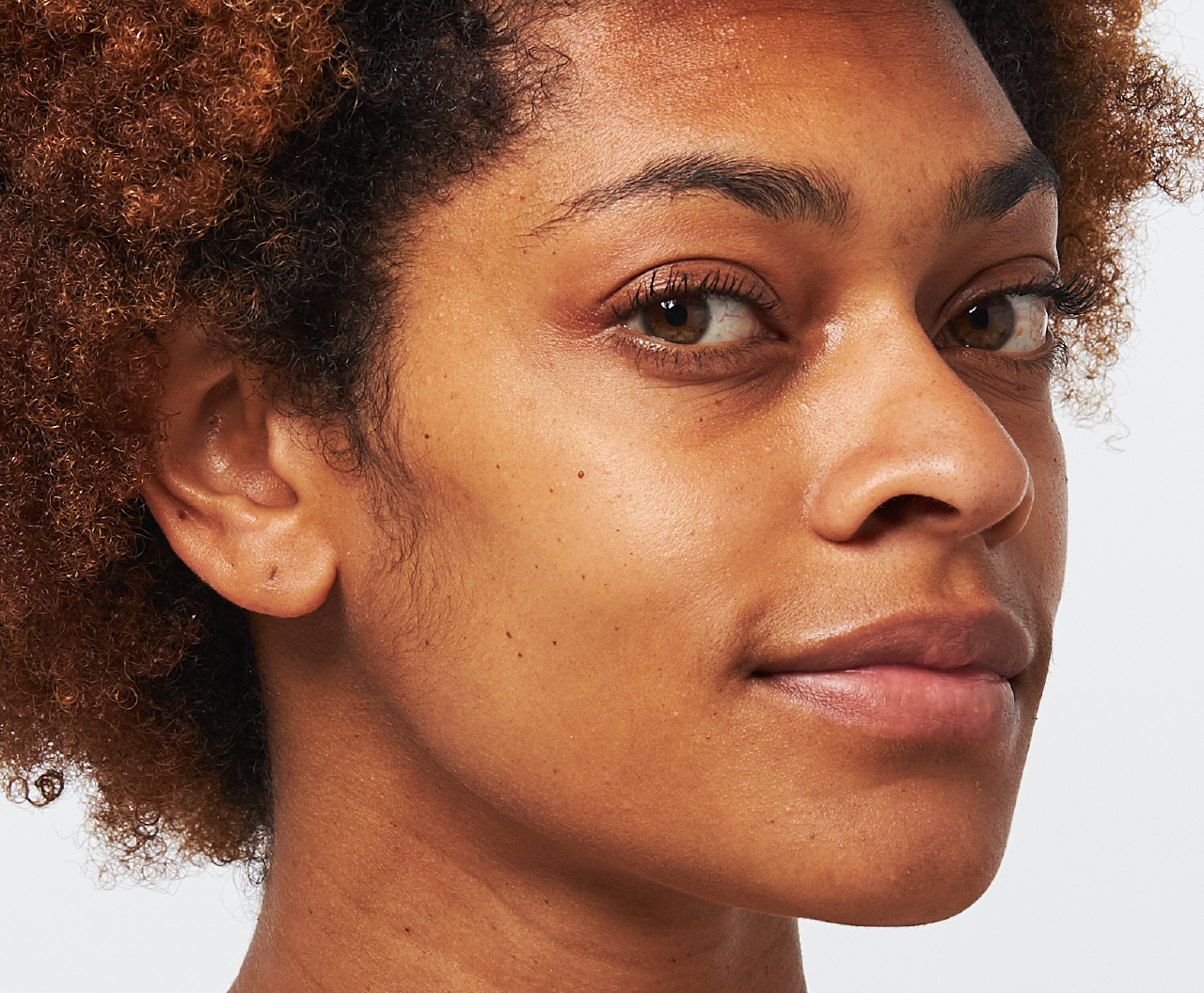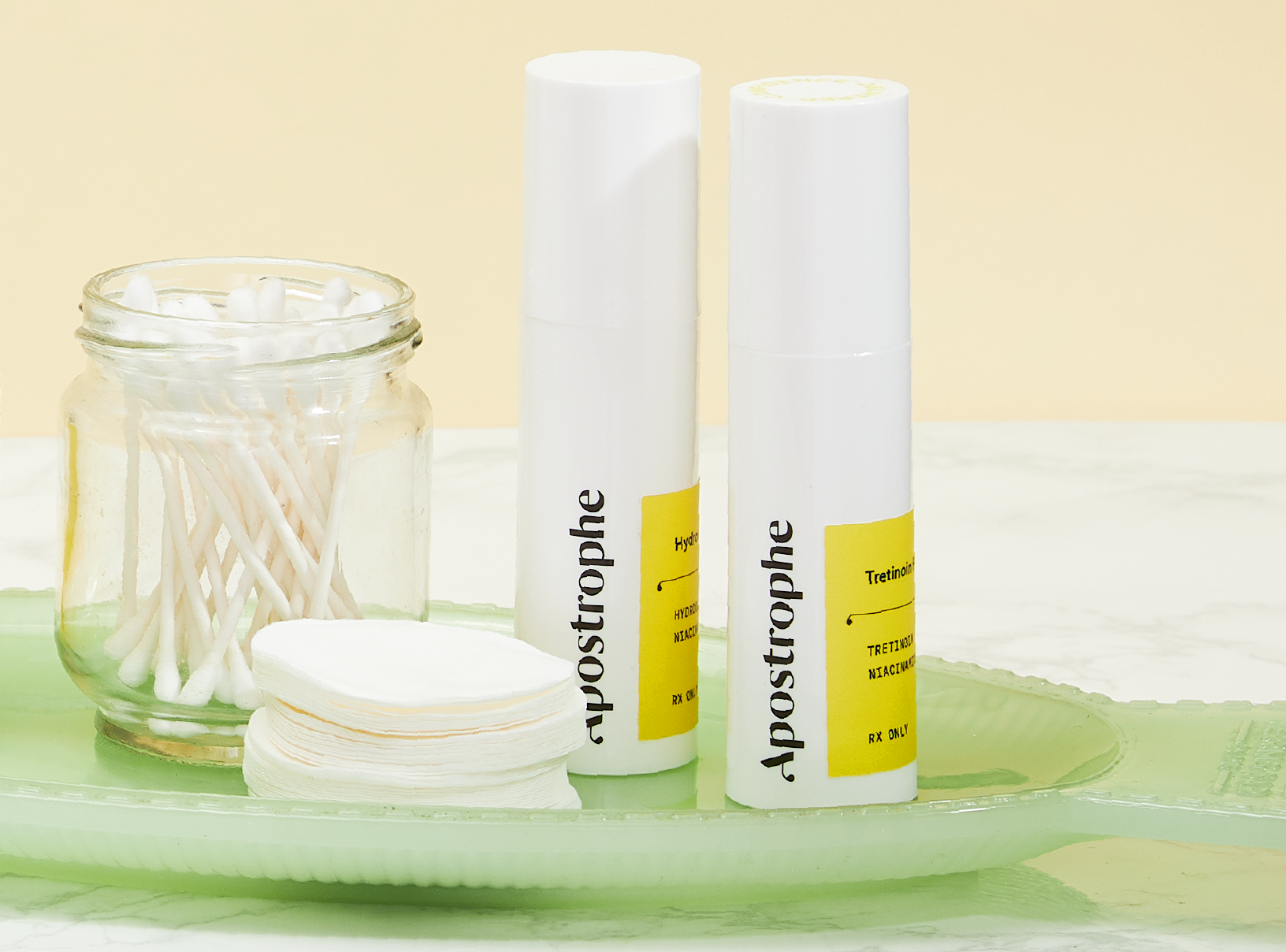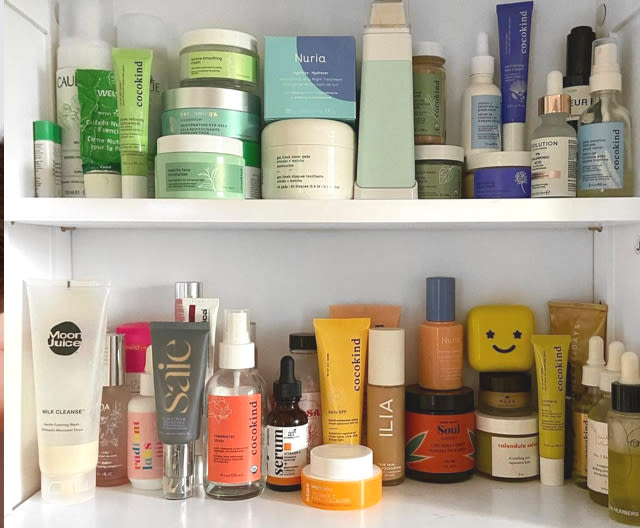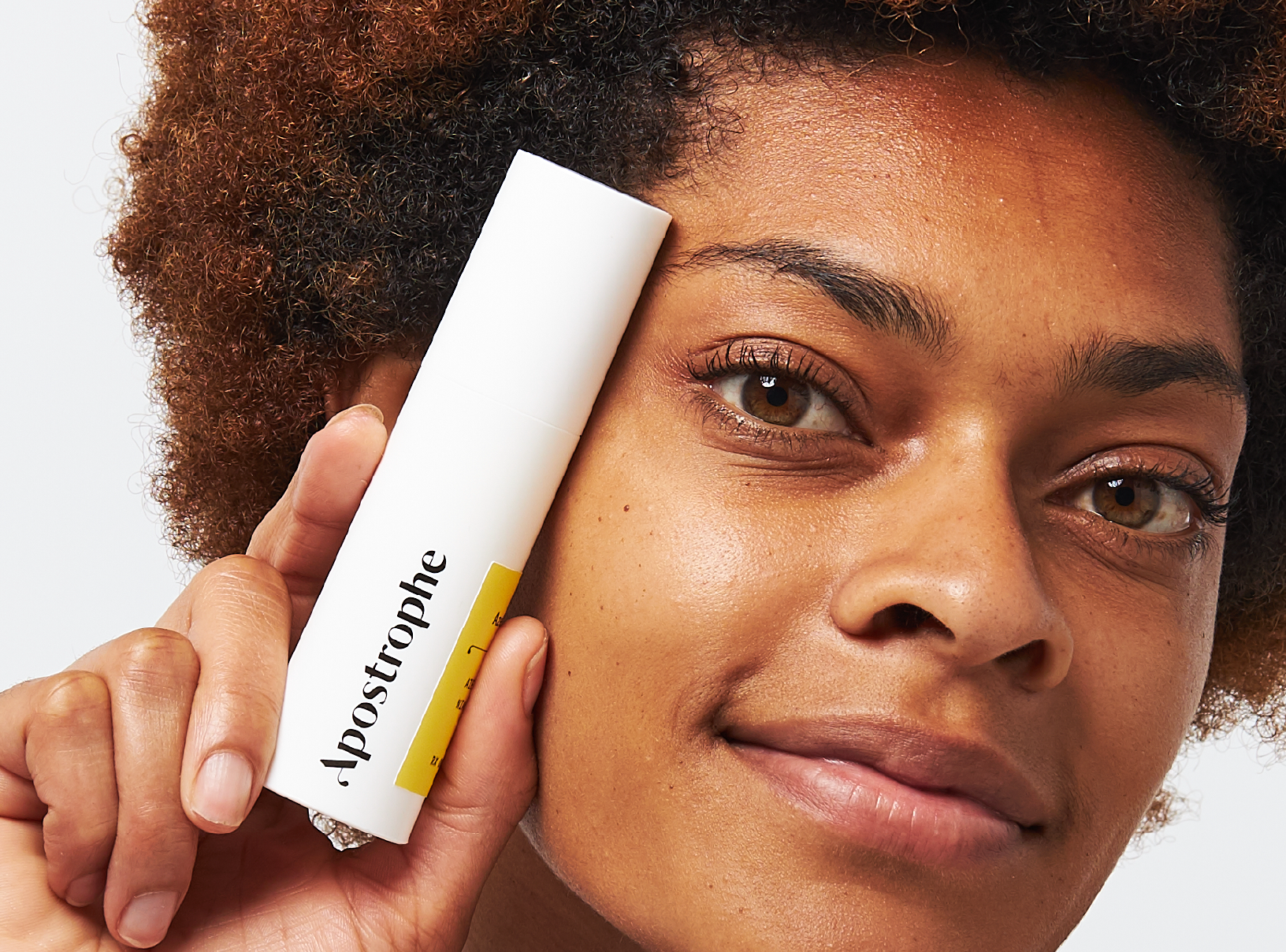Apostrophe Treatments
Benefits of niacinamide explained


SHARE
Apostrophe Treatments
Benefits of niacinamide explained
Medically reviewed by Katelyn Hagerty FNP
Written by Apostrophe Team
Last updated 4/1/2024
Search for information about the newest skincare trends and you’ll come across one ingredient after another promoted as the latest essential for healthy skin.
There’s caffeine, which may play a major role in slowing the aging process.
There’s also hyaluronic acid—notorious for its ability to retain water, improve skin elasticity, and reduce the visibility of fine lines and wrinkles.
Then, there’s niacinamide. A water-soluble form of vitamin B, niacinamide offers a range of skincare benefits, including the ability to reduce visible signs of aging, improve skin tone, and shield your skin from common sources of damage.
Unlike many other popular skincare ingredients, the benefits of niacinamide are plentiful—and backed by science—especially when it comes to preventing signs of aging.
Read on to learn more about these benefits, and how niacinamide can fit into your anti-aging skincare routine.
What Is Niacinamide?
Niacinamide is a form of vitamin B3. In fact, it’s one of two forms of vitamin B3, the other being niacin, or nicotinic acid.
You can find niacinamide in many common foods, including fish, poultry, meat, yeast, milk, eggs, beans, grains, and green vegetables. It’s also widely available as a dietary supplement.
Niacinamide can be consumed in food or produced within the body from niacin. It’s used in a variety of different bodily processes, including maintaining healthy cells and metabolizing fats and simple carbohydrates.
Like many other vitamins, niacinamide helps to maintain your skin. Research shows it can actually improve the skin’s structure, potentially reversing certain effects caused by the aging process.
Thanks to its anti-aging skincare benefits, you can find niacinamide in many skin creams, clay masks, and other products.
Benefits of Niacinamide
So, what does niacinamide actually do? Well, a lot. Unlike many other hyped skincare ingredients—which are often products of marketing instead of science—niacinamide is backed by serious research showing it can improve your skin.
Below are several of the most impressive skincare benefits of niacinamide, along with the latest research behind each claim.
Fewer Fine Lines and Wrinkles
Fine lines and wrinkles are common signs of aging you may first notice in your 20s, 30s, or 40s.
Wrinkles develop due to a combination of natural changes in your skin, as well as the effects of frequent exposure to sunlight.
Research has found that niacinamide can make fine lines and wrinkles less visible, giving skin a more youthful appearance.
For example, in one study of niacinamide, researchers asked a group of 50 women with visible wrinkles and fine lines to use two separate treatments.
One treatment, which was to be applied to one side of the face, contained niacinamide.
The other skincare product applied to the opposite side of the face was a non-therapeutic placebo.
The women were instructed to apply the treatments twice daily for a period of 12 weeks. During the study, the researchers measured progress using facial photos and special equipment.
At the end of 12 weeks, the women had fewer fine lines and wrinkles on the skin treated using niacinamide than on the skin treated with the non-therapeutic lotion.
A similar study was carried out in Japan with almost identical results—the area of skin treated with niacinamide showed reduced wrinkles.
Put simply, regular use of niacinamide can make fine lines and wrinkles less visible, sometimes by a significant amount.
More Consistent Skin Coloration
Research also shows that niacinamide improves hyperpigmentation, a form of skin discoloration that can cause dark patches.

HYPERPIGMENTATION TREATMENT
Target dark spots and hyperpigmentation with customized prescription treatment.
In the same 50-woman study mentioned above, researchers also looked at the effects of niacinamide on hyperpigmented spots—and found similar, skin-clearing results.
They found that niacinamide reduced the severity of blotchiness and hyperpigmentation, giving the skin a more consistent tone.
This is likely due to niacinamide’s lightening effects. In a 2002 study published in the British Journal of Dermatology, researchers found that niacinamide inhibits the process by which melanin is transferred into skin cells.
This guide to hyperpigmentation goes into more detail about the factors that may make your skin take on an uneven tone or blotchy appearance over time.
Improved Skin Barrier
Your skin isn’t just there to look good—it’s also responsible for protecting your body from germs and environmental damage.
Niacinamide improves the ability of your epidermis (the outermost layer of your skin) to function as a barrier that protects you from infection.
It also reduces transepidermal water loss—a type of moisture loss that occurs when water passively evaporates through your skin.
This improves your skin’s physical function and helps it to both look its best and perform well as a protective barrier for your body.
Increased Skin Elasticity
Many signs of aging, such as wrinkles and jowls develop as your skin gradually loses elasticity with age.
Over time, this thinner, less elastic skin forms into lines and creases as you make certain facial expressions.
Clinical studies on the benefits of niacinamide show that in addition to improving the skin’s barrier function and color, the ingredient can also make aged skin more elastic.
For example, in the same 50-woman study that found topical niacinamide reduces wrinkles and improves hyperpigmentation, researchers also measured niacinamide’s effects on skin elasticity using a noninvasive suction device.
They found that niacinamide improved the women’s skin elasticity, which may be responsible for its positive effects on fine lines and wrinkles.
Improved Protein Synthesis
Like the rest of your body, your skin is made of structural proteins. Among these are collagen, which makes up approximately 75 to 80 percent of your skin, elastin, which gives your skin its structure, and keratin, which gives your skin its rigidity and barrier-like function.
Research shows that regular niacinamide use can increase protein synthesis, letting your skin more easily create the proteins it needs to repair itself and function properly.
This not only improves your skin’s appearance—it also helps your skin more efficiently play out its role in protecting you from bacteria, heat, cold and other sources of damage.
Reduced Inflammation and Acne
In addition to improving your skin’s appearance and function, research shows that niacinamide can reduce inflammation.
Skin inflammation is a common issue that occurs due to injuries, infection, and skin conditions such as acne and rosacea.
Inflammation can be particularly troublesome if you have inflamed acne—a harsh, often painful form of acne that can cause your skin to become red, tender, and swollen.
Niacinamide’s anti-inflammatory effects make it great for clearing acne breakouts, especially if you’re prone to papules, pustules, and cystic acne.
If you frequently get acne breakouts, you may want to consider using niacinamide alongside a dedicated acne medication, such as tretinoin. In fact, niacinamide can be found in Apostrophe's tretinoin formulation because of its soothing properties that we've explained above.

PRESCRIPTION TRETINOIN
Target acne, dark spots, and signs of aging with this science-backed ingredient.
How to Use Niacinamide
Niacinamide is found in many common foods, meaning you’ll usually consume a normal amount of this vitamin through your diet.
As a skincare ingredient, you can find niacinamide in creams, serums, cleansers, and numerous other topical treatments designed to reduce the signs of aging and get rid of acne.
Like with other skincare ingredients, products that contain niacinamide vary in strength from 2% to 10% or more.
It’s best to start with a relatively mild product, and then adjust your usage based on how your skin feels.
Most niacinamide products are designed to be applied to clean, dry skin. If you use moisturizer, make sure to apply it after using your cream, serum, or other product containing niacinamide.
Our full guide to niacinamide goes into more detail about how you can use niacinamide to treat aging and acne.
How the Benefits of Niacinamide Can Work for You
Unlike many other popular skin care ingredients, niacinamide has a large variety of benefits that are supported by real, reputable scientific research.
From reducing the appearance of fine lines and wrinkles to improving your skin’s color, elasticity, and ability to maintain itself, niacinamide has a diverse range of benefits.
You can also learn more about preventing the signs of aging, treating acne, and improving your overall skin health in this guide to dermatologist-recommended skincare tips.
References:
Herman, A. & Herman, A.P. (2013). Caffeine's mechanisms of action and its cosmetic use. Skin Pharmacology and Physiology. 26 (1), 8-14. Retrieved from https://pubmed.ncbi.nlm.nih.gov/23075568/
Lubart, R., Yariv, I., Fixler, R. & Lipovsky, A. (2019, October). Topical Hyaluronic Acid Facial Cream with New Micronized Molecule Technology Effectively Penetrates and Improves Facial Skin Quality: Results from In-vitro, Ex-vivo, and In-vivo (Open-label) Studies. The Journal of Clinical and Aesthetic Dermatology. 12 (10), 39-44. Retrieved from https://pubmed.ncbi.nlm.nih.gov/32038748/
Wohlrab, J. & Kreft, D. (2014). Niacinamide - mechanisms of action and its topical use in dermatology. Skin Pharmacology and Physiology. 27 (6), 311-5. Retrieved from https://pubmed.ncbi.nlm.nih.gov/24993939/
Niacinamide. (2020, October 5). Retrieved from https://medlineplus.gov/druginfo/natural/1534.html
Wrinkles. (2018, October 14). Retrieved from https://medlineplus.gov/ency/article/003252.htm
Bissett, D.L., Oblong, J.E. & Berge, C.A. (2005, July). Niacinamide: A B vitamin that improves aging facial skin appearance. Dermatologic Surgery. 31 (7 Pt 2), 860-5, discussion 865. Retrieved from https://pubmed.ncbi.nlm.nih.gov/16029679/
Kawada, A., Konishi, N., Oiso, N., Kawara, S. & Date, A. (2008, October). Evaluation of anti-wrinkle effects of a novel cosmetic containing niacinamide. The Journal of Dermatology. 35 (10), 637-42. Retrieved from https://pubmed.ncbi.nlm.nih.gov/19017042/
Hakozaki, T., et al. (2002, July). The effect of niacinamide on reducing cutaneous pigmentation and suppression of melanosome transfer. 147 (1), 20-31. Retrieved from https://pubmed.ncbi.nlm.nih.gov/12100180/
Gehring, W. (2004, April). Nicotinic acid/niacinamide and the skin. Journal of Cosmetic Dermatology. 3 (2), 88-93. Retrieved from https://pubmed.ncbi.nlm.nih.gov/17147561/
Skin Care and Aging. (2017, October 1). Retrieved from https://www.nia.nih.gov/health/skin-care-and-aging
Skin. (2016, March 17). Retrieved from https://my.clevelandclinic.org/health/articles/10978-skin
Like what you just read? Sign up for our email list to get the scoop on skincare science delivered straight to your inbox.

Education
What is milia?
What is milia? Today, we’re jumping into one type of bump that you may have heard about most commonly in infants — milia.
Read More
Education
Best moisturizer for acne-prone skin
If you have combination acne-prone skin, figuring out which moisturizer is best for your skin might be tough. In this guide, we break down the best moisturizer for combination, acne-prone skin.
Read More
Education
How to build a face care routine
As you get into skincare, it might seem overwhelming, especially trying to figure out the order you're supposed to apply products in. Below, we detail how to build a face care routine for your skin!
Read More